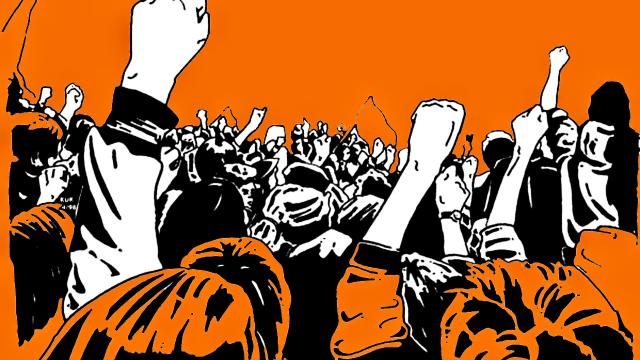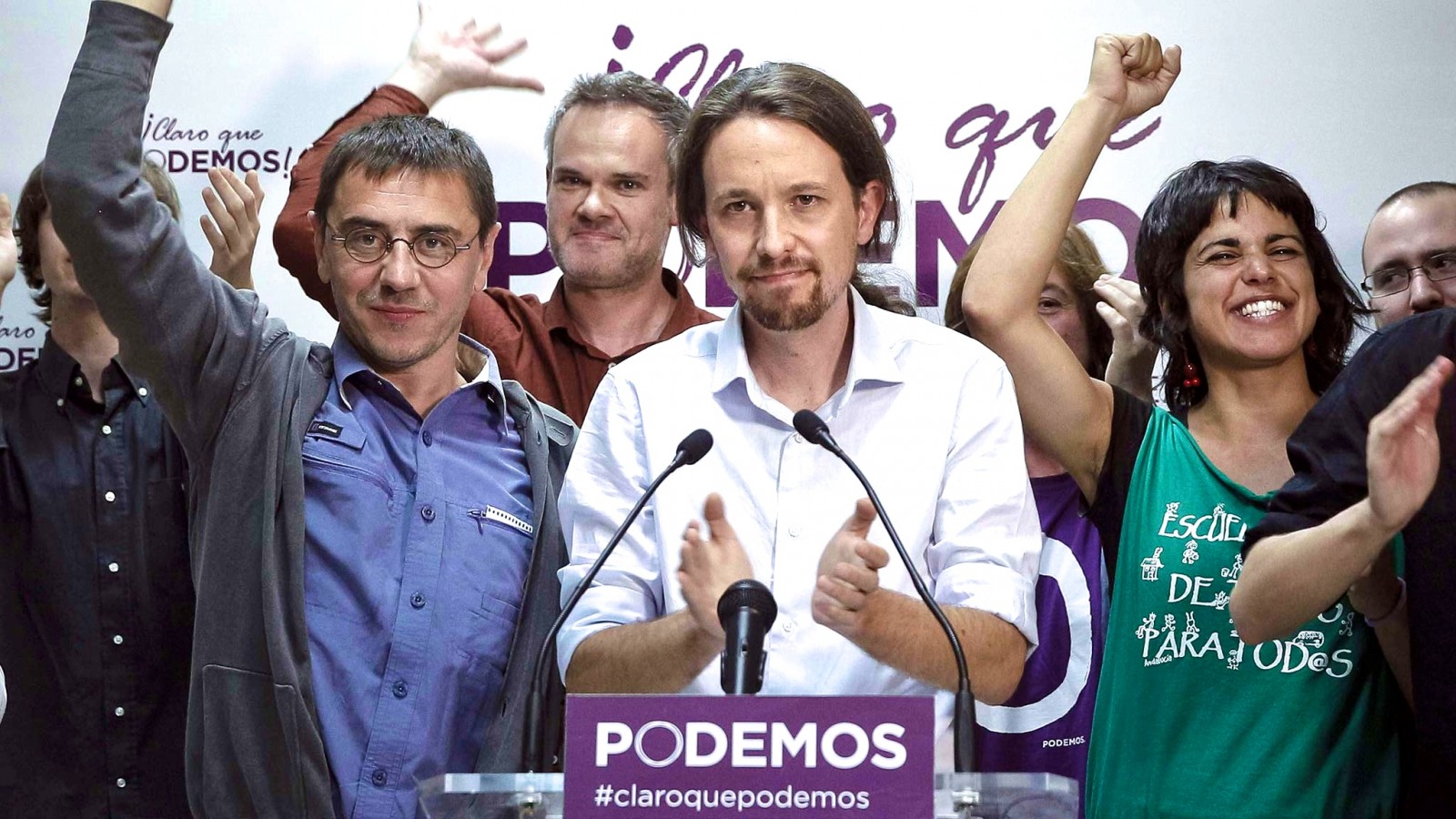
Ever since I wrote a book about Occupy Wall Street, I’ve often found myself on the receiving end of people asking, “What happened to Occupy, anyway?” Now, more than two years since the movement faded from the headlines, and in the wake of French economist Thomas Piketty’s bestselling diagnosis of economic inequality, the urgency of these questions is mounting, not diminishing. The answer is also becoming clearer: the networks of activists that formed in the midst of 2011’s worldwide wave of protest are developing into efforts to create durable economic and political experiments. Rather than focusing on opposing an unjust system, they’re testing ways to replace it with something new.
The 2011 movements were always prefigurative in some respects. From Tahrir Square in Cairo to Zuccotti Park in New York, protesters eschewed formal leadership in order to practice direct democracy, a means of revealing just how false our societies’ claims to being democratic have become. They built little utopias that provided free food, libraries, music, religious services and classes, trying to put on display what they thought a good society should look like.
The 2011 movements also reflected the emergence of a global community that spans borders as protesters in different countries borrowed strategies and slogans from each other. Though the U.S. media tended to present Occupy Wall Street as a homegrown phenomenon, the early meetings in New York that led to it were full of people with ties to movements in places such as Cairo, Athens and Barcelona. In the first weeks of the occupation in Zuccotti Park, I remember an activist from Spain rolling her eyes as she watched New Yorkers repeating some of the mistakes she and her comrades had made a few months earlier in Madrid. Even now, a careful observer can see these movements around the world riding a common wave, maturing in parallel with each other as they paddle their way to the next breakthrough, one experiment at a time.
At first, after the 2011 encampments were dispersed, many participants wound up disappointed. In Egypt, the downfall of Mubarak has led to violent conflict between the country’s U.S.-funded military and the Muslim Brotherhood, wiping away many people’s hopes for a more democratic future. In the United States, Occupy’s inability to produce a lasting organization, or to cross dividing lines of race and class, led to a mass exodus. Many of the movement’s most capable organizers stopped identifying with the “Occupy” label and moved on to campaigns that put them alongside front-line communities in struggles for decent pay, environmental justice and housing rights, for example. They came to recognize that there is more to fighting for change than protesting. It’s telling that a group of Occupy-affiliated activists who published a handbook called “Beautiful Trouble” in 2012 are now getting to work on a sequel: “Beautiful Solutions.”
Throwing a Party
At a time when street protests aren’t around every corner, the movements’ aloof stance toward party politics becomes harder to maintain. This can be a good thing. When I was in India over New Year’s, I witnessed something I wished more American activists had been there to see: A brand new political party had seized New Delhi’s local government after just months of serious campaigning. The Common Man Party, or AAP, had grown out of India’s 2011 movement, a cascade of high-profile protests and hunger strikes against government corruption. Meanwhile, members of the 15M movement in Spain, which had always refused to be tainted by party politics, were creating parties like Podemos and Partido X; both competed in this year’s elections, and Podemos in particular saw significant victories. A group of Occupy veterans in the United States are trying to launch party of their own, the After Party, while others are working with the more established Working Families Party in a handful of states to push the Democrats in progressive directions.
The 2011 movements made clear that existing political structures have left people feeling alienated and unrepresented, so the new parties attempt to advance the democratic process in creative ways. Partido X, like a crop of other Internet-based parties spreading around the world, allows voters to weigh in on policy in real time, not just on election day; it also keeps the identities of its members private. What makes the After Party different, according to one of its founders, “is that 365 days out of the year it is a humanitarian organization,” beginning with a few days of volunteer work in crisis-ridden Detroit. AAP’s chief shocked voters by resigning from office in New Delhi after just a few weeks, a protest over the blockage of a sufficiently robust anti-corruption law.
Some of the most successful post-2011 parties so far are still those that operate in fairly conventional ways — probably because these are the easiest for large numbers of people to embrace. Greece’s anti-austerity coalition Syriza formed a political party in 2012 and quickly became the chief opposition power in the Greek parliament; it came first in Greece during this year’s EU elections and succeeded in reversing the ascent of the neo-fascist Golden Dawn. Like Podemos in Spain and the Working Families Party in the United States, Syriza assumes that the best way to win is not to reinvent the electoral wheel entirely, but to channel the popular frustration expressed in the protest encampments back into the existing system with renewed vigor. From country to country, activists are experimenting to see how much of the encampments’ utopianism they can afford to retain.
New Commons
Many veterans of the 2011 movements nevertheless continue to believe that their electoral systems have become so broken that real change must come from outside. Rather than just making an end-run for government office, they believe they need to rebuild the economy and political structure, starting at the level of local communities and growing upward from there. That’s where some of the most interesting activism is happening.
Occupy alums have been especially busy promoting worker cooperatives, whose earnings tend to stay in local communities rather than being siphoned to big banks. One of the first enterprises to grow out of Occupy Wall Street was a worker-owned print shop, and in the wake of Hurricane Sandy, Occupy activists helped affected communities set up their own cooperative businesses in order to be more resilient against the rich developers who arrived in the wake of the storm. Occupiers in Boston have been working with a non-profit called the New Economy Coalition to support new cooperative projects. People from around the country attended the Jackson Rising conference in Mississippi last month, which focused on using cooperatives to build lasting economic power in black communities hit hard by the last financial crisis. This so-called New Economy movement has been growing for years, but Occupy brought a new generation into it.
Recently, ex-protesters have begun to think about ways of sharing resources that hinge around the concept of the commons, which has roots in indigenous traditions as well as Roman law. One Occupy DC-er is turning churches into hubs for affordable local food, and an Occupy Wall Street-er is organizing teenagers to pick up compost on bikes. Those who halted evictions across the country with Occupy Our Homes are turning from defense to offense by studying community land trusts as a strategy for securing affordable housing in the long term. The American activists still have a lot to learn from their counterparts in Spain, who built a powerful network through their movement to halt evictions and transform unused real estate into community centers.
Online and offline, the commons serves as a positive vision to unite a wide range of campaigns, from those fighting climate change to those resisting the displacement caused by urban gentrification. Hacktivists are cultivating the digital commons through free-software projects such as Loomio, a platform for collaborative decision-making developed by a cooperative of Occupiers in New Zealand. Greeks have been holding a CommonsFest for the past two years on Crete. Activists from across Europe are building local commons through an experiment in southern Italy called the unMonastery, while Spanish Indignados organized an ambitious project to design national-level, commons-based policies for the government of Ecuador.
Better Models
The spirit of Occupy lives on, and the methods its participants are employing are evolving. Old-fashioned resistance nevertheless continues to be an important part of the picture: The Wildfire Project, for instance, is post-Occupy coalition of activists that’s helping various initiatives, such as student’s rights and housing rights, situate themselves within a broader social justice movement. Another Occupy offshoot, Gulf Labor, has dramatized the art world’s role in labor exploitation through actions at the Guggenheim Museum, in conjunction with ongoing struggles in India and the Middle East.
The challenge now is for people to continue to develop ways of organizing to meet our needs in ways that liberate us from the structural inequities that stirred up the protests of 2011. Can we find ways to secure shelter without relying on a Wall Street bank, or to work without our labor being exploited? Can we rebuild local economies so that they’re no longer dependent on Wal-Marts, military bases or prisons? What will it take to ensure that government is more responsive to popular will than to big money?
Answering these kinds of questions is at once an opportunity and an adventure. It can involve people who didn’t feel the draw of protest in 2011, as well as those who did. They can help sustain patient resistance for years to come. Activists around the world should be learning from each other’s attempts. Our collective future depends on the alternatives we create today.
Nathan Schneider is the author of “Thank You, Anarchy: Notes From the Occupy Apocalypse” and “God in Proof: The Story of a Search From the Ancients to the Internet.” He is an editor of two online publications, Killing the Buddha and Waging Nonviolence.
3 WAYS TO SHOW YOUR SUPPORT
- Log in to post comments












